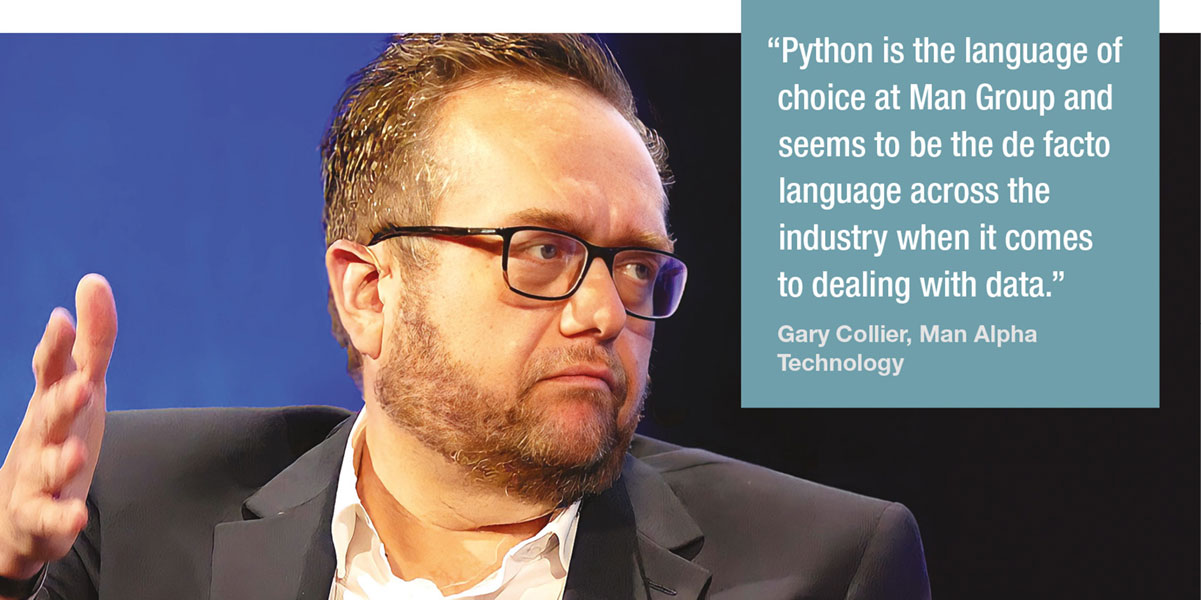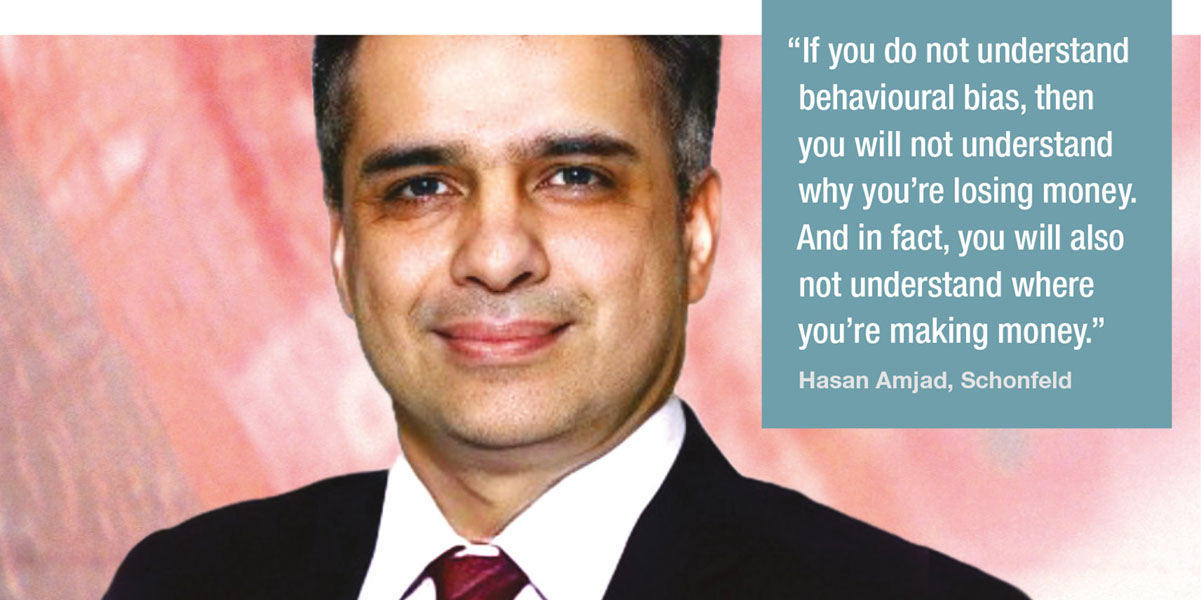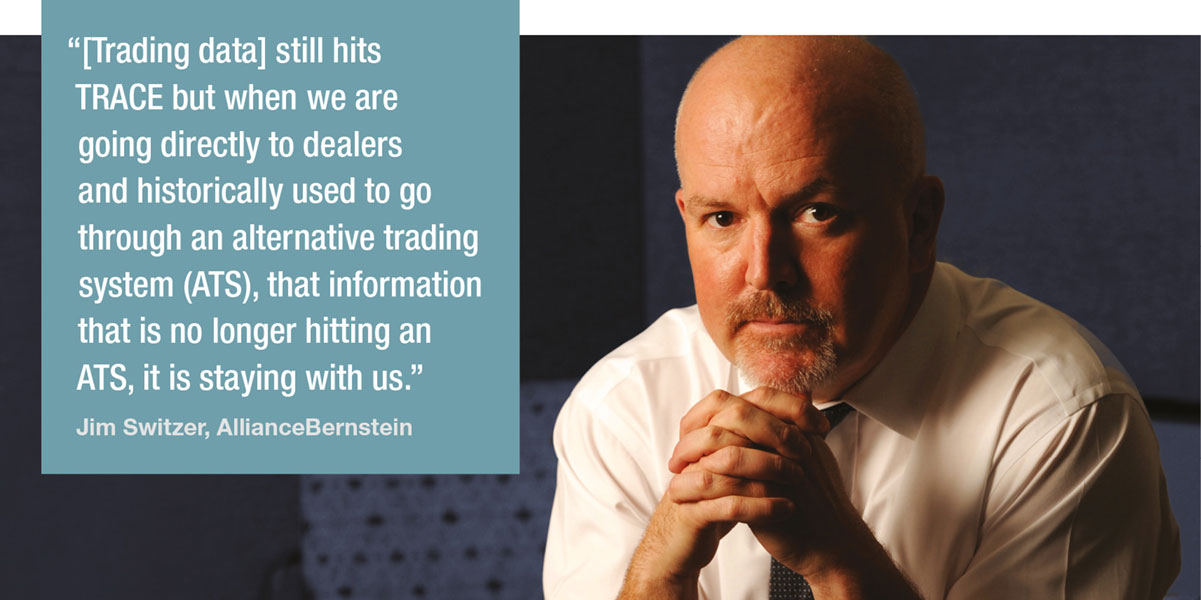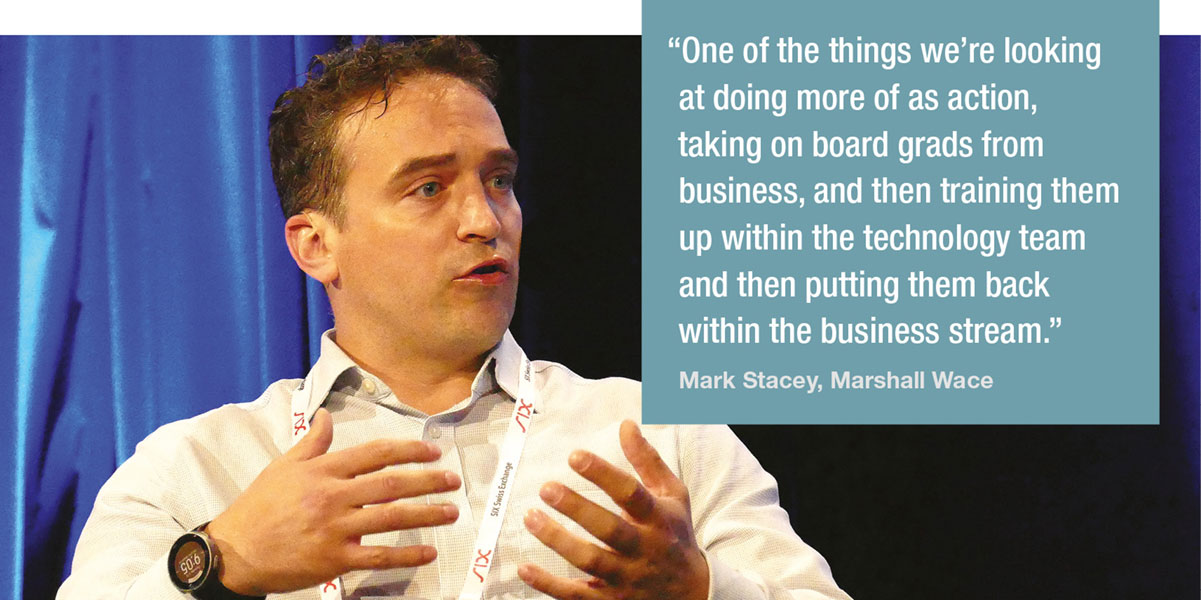
Where some firms advocate ‘democratising’ data others struggle to capture, process or access data which is crucial to supporting the business.
Creating access to data, so that it can be interrogated at will by different team members, is empowering traders and portfolio managers to identify signals and patterns which can improve execution quality and investment goals.
Gary Collier, CTO of Man Alpha Technology, has responsibility for all the front office technology used across Man Group’s investment managers, and speaking at TradeTech in April 2022 outlined his firm’s approach to data democratisation.
“On the people side, we are trying to empower our traders, people that traditionally would not have known what a coding language was, with technology,” he said. “Python is the language of choice at Man Group and seems to be the de facto language across the industry when it comes to dealing with data. We’ve built in-house training programmes to level people up with Python and data science skills.”
This has resulted in the firm’s front office teams getting skills which allow them to be fully engaged with the use of data to support trade execution.
“Looking at trading in particular, everybody on our trading desk has now gone through Python/data science boot camps,” he said. “We’ve got traders with excellent market knowledge, excellent domain knowledge, and given them the technical skills. Data democratisation running in parallel, and access to all the data assets within the firm. That’s a pretty heady combination, I think, when it comes to innovation and pushing the frontier.”
Taking advantage of data in the trading environment is not the exclusive preserve of systematic investors; major long only firms are making sure that data can be used by trading teams to compete effectively across asset classes.

“We are using data to be the first mover, to capitalise when we see market imbalances,” says Tim Morbelli, head of municipal bond and emerging markets trading at AllianceBernstein. “In certain asset classes our models show when a market is over-borrowed or over-sold, we have created liquidity analytics dashboards to show us where in the market we are seeing more pressure, more buyers, more sellers, how it has changed over time, how does that look versus our portfolio versus the benchmark. We are trying to create different analytics to show us that we can continue to outperform the benchmark and our competitors. We are trying to generate better alpha returns for our clients.”

In high touch trading, more typical of over-the-counter (OTC) asset classes including fixed income, data can be used to analyse the execution process itself in order to identify behavioural biases that impact human trading activity. Also speaking at TradeTech, Hasan Amjad, head of execution risk at Schonfeld said, “If you do not understand behavioural bias, then you will not understand why you’re losing money. And in fact, you will also not understand where you’re making money. A more useful definition is that … ‘actions at the sharp end instantly, instantaneously resolve all ambiguity’. Ambiguity that you’ve been dealing with up to that point is going to feed into the effectiveness of your decision, and if you want to reduce that ambiguity, you have to understand what sort of behavioural biases are feeding into your decision.”
Barriers to access
The advantages are clearly laid out, but there are clear barriers to capturing, analysing, sharing and consuming the data. As buy-side firms are able to control their trading more effectively, they are also able to capture more data.

Jim Switzer, global head of trading at AllianceBernstein, says, “The way data is disseminated into the market is changing, with the development of execution management system (EMS) technology. [Trading data] still hits TRACE [the US post-trade tape] but when we are going directly to dealers and historically used to go through an alternative trading system (ATS), that information that is no longer hitting an ATS, it is staying with us. The ATS no longer has the stack of bids and offers, we have the stack, and that’s important information to us.”
Morbelli adds, “You can have the best data analytics model, but if you are getting tier 3, tier 4 information or you are such a small player you are not even seeing half the market, regardless of how amazing your model is, you are missing a massive amount of input to make a viable model. Garbage in and garbage out, you have to make sure you are capturing as much data as possible.”
There is also a considerable amount of heavy lifting to be done once information is gathered to reduce the risk of ‘noise’ being built into a model.
“Once you capture the data, cleaning the data as the next step is really difficult to do,” he says. “Lots of information that may or may not be useful can skew the output of anything you are trying to create or generate. You have to clean the data and that varies by asset class, market dynamics and by traders moving seats. It changes over time.”
Now the data is held and clean it needs to be accessible in such a way that different teams in the front office have the capacity to use it.
Collier said, “I wouldn’t want anybody to think this is about technologists sitting on some high hill because their tech skills are in demand, and calling the shots, that’s not the case. There are three pillars here, there’s the technology, the market knowledge and then the skills individuals in the team have.”
Keeping control of democratised data
There are risks when opening up access to data. For that reason, traditional investment firms will often have a bureaucratic process to give permission to a new user, but structures are necessary in data management and architecture which will allow modelling and tests to be conducted which protect source data. Using cloud technology – either commercial or proprietary – provides a very useful toolset in this space.

Mark Stacey head of business intelligence, data platform & reporting applications at Marshall Wace said, “We actually built a cluster where the researchers could share the same resources. And that enabled us to get to a point where we were consuming big data, we were working with bigger datasets. Where cloud starts to be more interesting is the ability to do burst scaling. So you want to go out and you want to process a data set of size you’ve never seen before, you don’t have the internal hardware to do that. The other place where cloud is interesting is for ingesting datasets. There are marketplaces like Amazon and Snowflake, where people can publish datasets and consume it.”
These also support management of data sets in order to allow the lineage of data to be checked and controlled.
“Services like Snowflake have ‘Time Travel’; so your database engines have to be able to give you the ability to get back to the data as it was at a point in time, and also to handle the data lineage,” he says. “How did I create this data? Where did it come from? Where did we do data quality fixes? So it makes the whole database technology platform a lot more complex.”
Yet while new technology can be acquired, getting the right people who can engage with it in context across any business function is often challenging.
“You tend to find you either hire an experienced technologist trained in the business, or you’re hiring an experienced business person and training them in technology, and sometimes that that’s quite hard to do,” says Stacey. “One of the things we’re looking at doing more of is actually taking on board grads from business, and then training them up within the technology team and then putting them back within the business stream.”
The payoff for achieving more democratised data is that the enfranchised can potentially outperform the disenfranchised competition, putting a very real fire under those who have a fear of missing out.
“It helps us drive margins,” says Morbelli. “We can diversify what we offer to our clients, create new and innovative products, in a very scalable manner that doesn’t affect our margins. It really gives us that flexibility to go out and be on the offensive in a business where most people are thinking defensively.”
©Markets Media Europe 2025













